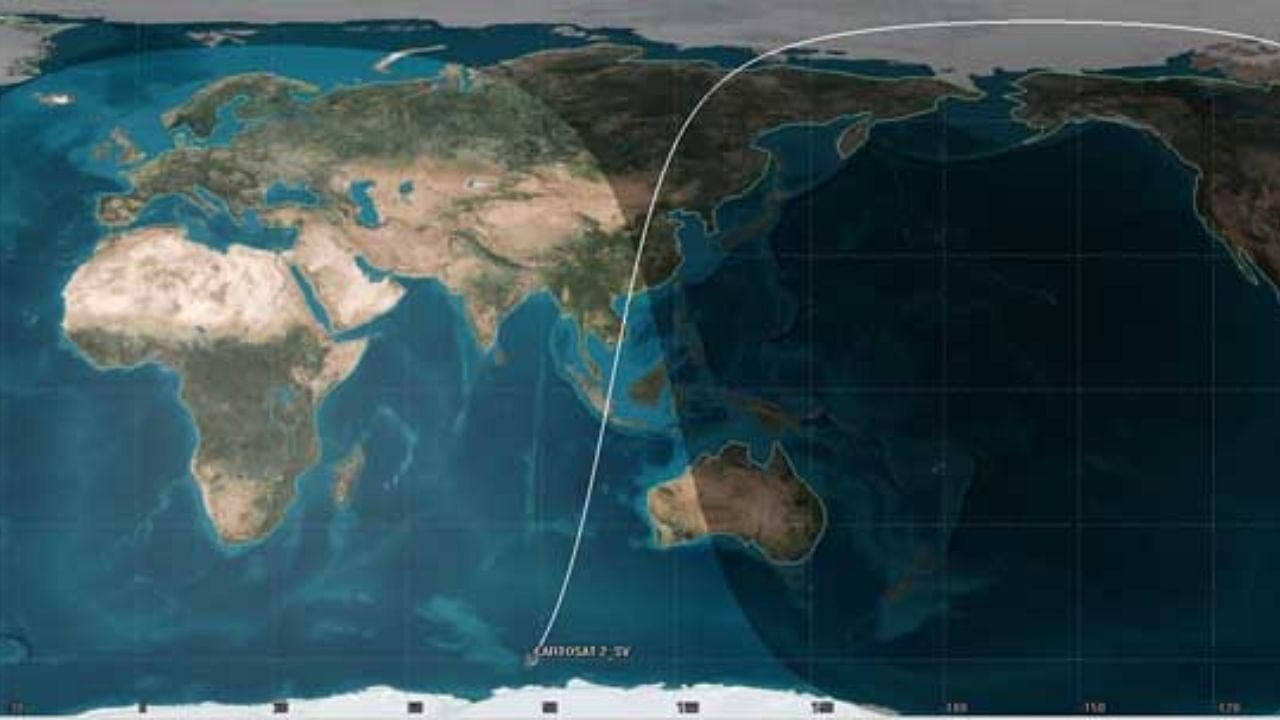
Final re-entry ground traces of Cartosat-2 show the impact point over the Indian Ocean.
Credit: ISRO
Bengaluru: The Indian Space Research Organisation (ISRO) successfully de-orbited and crashed its high-resolution imaging satellite Cartosat-2 on the Indian Ocean on February 14, four years after the satellite completed its mission life.
The satellite was expected to take about 30 years to naturally de-orbit after its mission but ISRO opted to incrementally lower its perigee (the point in its orbit where it is closest to the earth) using the leftover fuel.
The move was in compliance with the international guidelines on space debris mitigation.
“This involved reducing collision risks and ensuring safe end-of-life disposal, following recommendations from organisations like the United Nations Committee on the Peaceful Uses of Outer Space and the Inter-Agency Space Debris Coordination Committee,” the space agency said on Friday.
The System for Safe and Sustainable Space Operations team at the ISRO Telemetry Tracking and Command Network (ISTRAC) here predicted Cartosat-2's atmospheric re-entry for February 14.
The multi-object tracking radar at Sriharikota was utilised for tracking the satellite.
The final prediction placed the satellite’s atmospheric re-entry over the Indian Ocean at 3.48 pm on February 14. Analysis indicated that all major spacecraft components would demise during the atmospheric re-entry, Isro said.
Cartosat-2's successful de-orbiting at its end-of-life represented “a significant step” for the space agency in ensuring the long-term sustainability of outer space activities.
The satellite weighed 680 kg at its launch on January 10, 2007. It operated in a sun-synchronous polar orbit at an altitude of 635 km. Until 2019, it provided high-resolution imagery for urban planning.